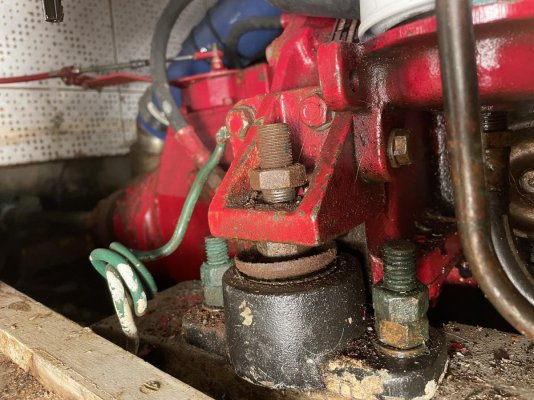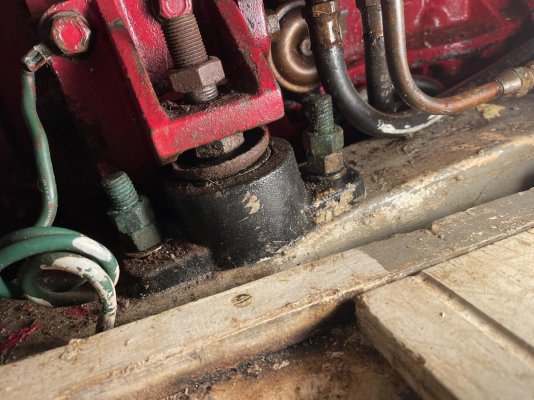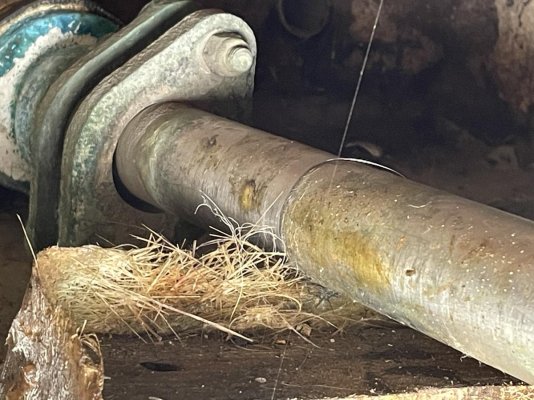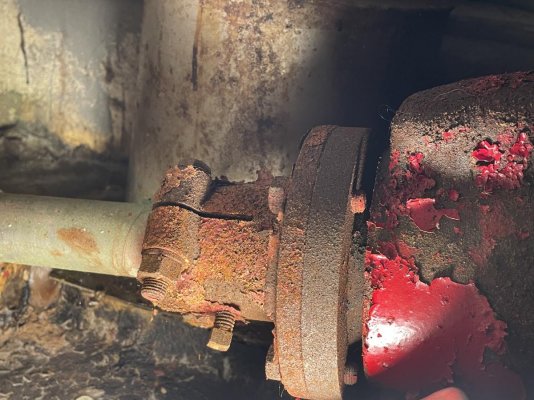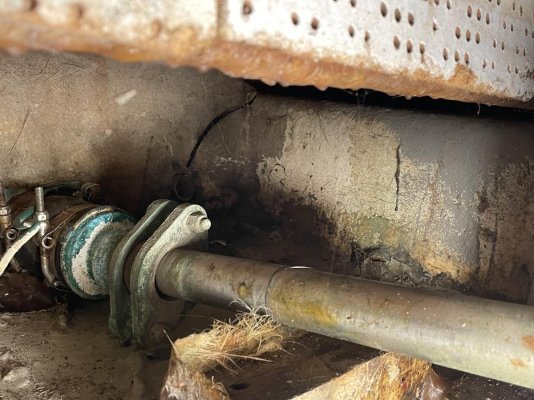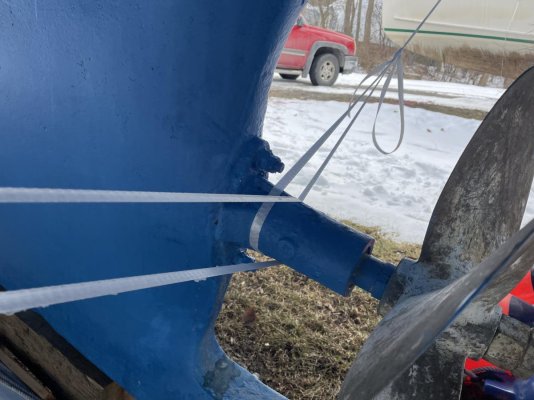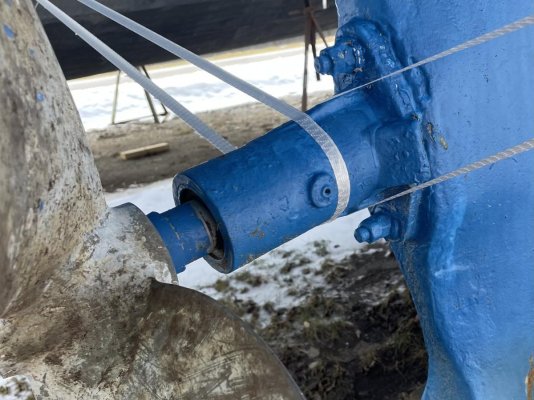CharlieO.
Guru
- Joined
- Sep 21, 2020
- Messages
- 1,558
- Location
- Lake Champlain Vermont, USA
- Vessel Name
- Luna C.
- Vessel Make
- 1977 Marine Trader 34DC
I believe I have a misalignment of the running gear due to a collapsed motor mount.
At the end of last season I had dock mates commenting that my bilge pump was running more often. I know my water tank had sprung a leak but I’m not convinced that was the only source of water. I think my shaft log/tube leaked a bit too prior to this issue. I think this misalignment may have worn a more prevalent hole in the tube that was more than likely at the end of its service life.
So I guess I will need to replace the motor mounts, pull the shaft and tube and replace cutless bearing on the prop end. Is there another bearing on the gear box side?
Any thoughts or comments before I undertake this project? I have contacted someone via PM on this forum that offered their experience in having this done by a yard. I will follow up more with them via phone call once I know what questions to ask. I will be doing this work myself.
I did pull the water tanks and had them repaired and pressure tested.
At the end of last season I had dock mates commenting that my bilge pump was running more often. I know my water tank had sprung a leak but I’m not convinced that was the only source of water. I think my shaft log/tube leaked a bit too prior to this issue. I think this misalignment may have worn a more prevalent hole in the tube that was more than likely at the end of its service life.
So I guess I will need to replace the motor mounts, pull the shaft and tube and replace cutless bearing on the prop end. Is there another bearing on the gear box side?
Any thoughts or comments before I undertake this project? I have contacted someone via PM on this forum that offered their experience in having this done by a yard. I will follow up more with them via phone call once I know what questions to ask. I will be doing this work myself.
I did pull the water tanks and had them repaired and pressure tested.

